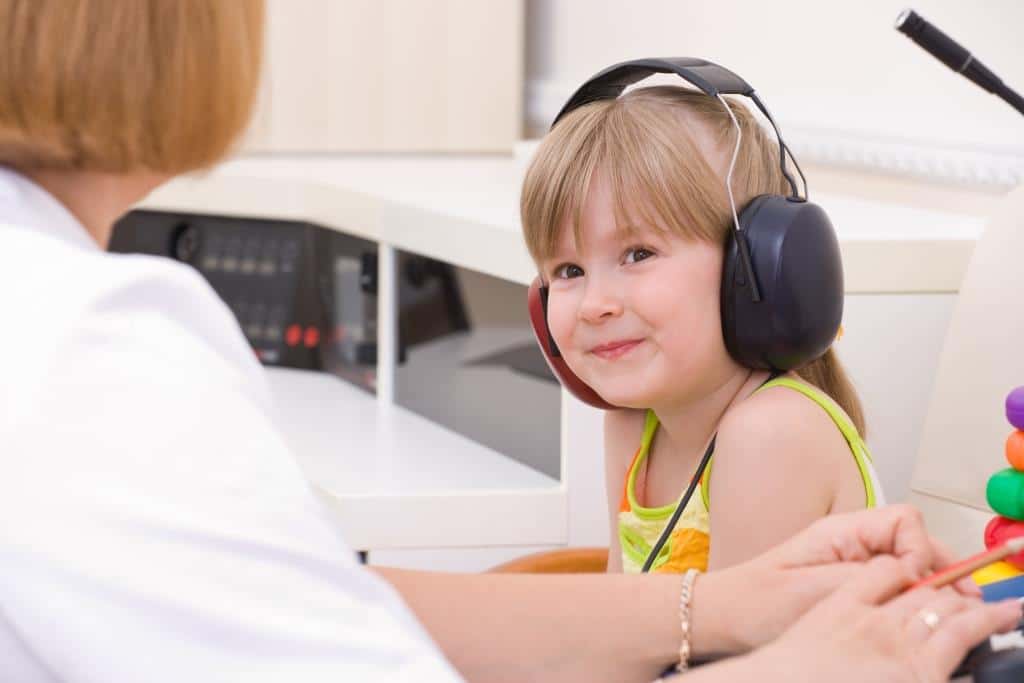By: Dr. Jennifer Thomson

With the COVID-19 pandemic and the transition to remote learning, many children utilized some type of headphones during their lessons. Research suggests that if small children use headphones, they might have trouble understanding in noisy situations as early as their teens. It is suggested that by the time these children are in their mid-40s, they could have hearing loss comparable to their grandparents in their 70s and 80s today.
More than 1 out of every 10 kids in the US already have hearing loss from noise exposure. Noise-Induced Hearing Loss (NIHL) is the only type of preventable hearing loss. Some headphones can produce sounds as high at 110 dBA. Less than 2 minutes at 100 dBA can damage anyone’s ears. Many children and young adults will turn up the volume of their music/media to “drown out” the environmental noise around them. While this may not seem loud to them, the actual sound level at the child’s ear can be very loud.
Some children may complain of tinnitus – ringing in the ears. This can be an early symptom of hearing loss. This can be described as a buzzing, hissing, or high-pitched noise when an external sound is not present.
What can parents do? Have a conversation with your child regarding the dangers of hearing loss. Hearing loss from noise exposure is permanent. Set volume limits on electronics. Both iPhones and Android phones can have volume limiting features. Many children know workarounds to remove this limit, so it’s important to set the limit together. When finding a safe listening level, aim for no more than 50% of the volume limit. It’s also a good idea to have your child take listening breaks. Damage from loud noise is cumulative. Taking breaks from sound can give the inner ear hair cells a break.
https://www.healthyhearing.com/report/53221-Kids-headphones-earbuds-hearing-damage-tinnitus
Many headphones designed for children advertise that they are volume limiting. Many studies have suggested that one-third of the headphones designed for children exceed safe listening levels. Many of these also have flaws that allow children to bypass the safe level.
https://www.noisyplanet.nidcd.nih.gov/have-you-heard/volume-limiting-headphones-safe-for-your-child
A good idea would be to test your child’s hearing sensitivity every 3 or so years. Make sure your child knows what symptoms to look out for: ringing in the ears, muffled sounds, fluttering, thumping in the ears, sound sensitivity, pain, difficulty understanding in background noise. Even if these symptoms are transient, they can return and they can become permanent.
https://www.healthyhearing.com/report/53221-Kids-headphones-earbuds-hearing-damage-tinnitus
Protect those ears!
- Choose headphones that have noise cancelling technology.
- Be careful not to use headphones when you need to hear environmental sounds around you (approaching cars, trains, other people, emergency vehicles, etc.
- Try to only use headphones for a short time per day (~ 1 hour)
- Give your ears a rest!
- Don’t listen with just one headphone. You might be tempted to turn the volume up, and that will put that ear at serious risk for damage.
https://www.noisyplanet.nidcd.nih.gov/kids-preteens/keep-listening-to-the-beat